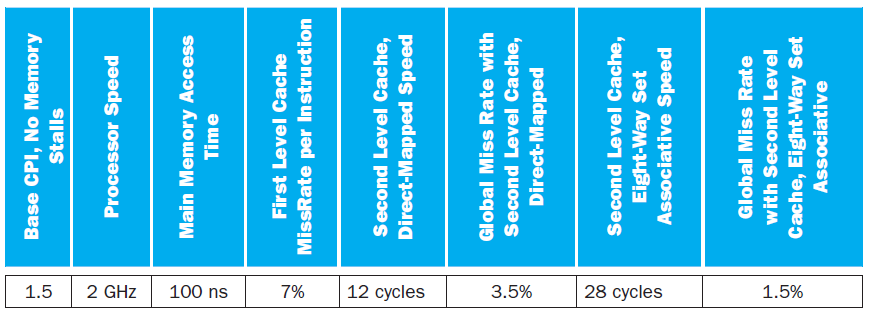This exercise examines the impact of different cache designs, specifically comparing associative caches to the direct-mapped caches
Question:
1. Using the sequence of references from Exercise 5.2, show the final cache contents for a three-way set associative cache with two-word blocks and a total size of 24 words. Use LRU replacement. For each reference identify the index bits, the tag bits, the block off set bits, and if it is a hit or a miss.
2. Using the references from Exercise 5.2, show the final cache contents for a fully associative cache with one-word blocks and a total size of 8 words. Use LRU replacement. For each reference identify the index bits, the tag bits, and if it is a hit or a miss.
3. Using the references from Exercise 5.2, what is the miss rate for a fully associative cache with two-word blocks and a total size of 8 words, using LRU replacement? What is the miss rate using MRU (most recently used) replacement? Finally what is the best possible miss rate for this cache, given any replacement policy?
Multilevel caching is an important technique to overcome the limited amount of space that a first level cache can provide while still maintaining its speed. Consider a processor with the following parameters:

4. Calculate the CPI for the processor in the table using: 1) only a first level cache, 2) a second level direct-mapped cache, and 3) a second level eight-way set associative cache. How do these numbers change if main memory access time is doubled? If it is cut in half?
5. It is possible to have an even greater cache hierarchy than two levels. Given the processor above with a second level, direct-mapped cache, a designer wants to add a third level cache that takes 50 cycles to access and will reduce the global miss rate to 1.3%. Would this provide better performance? In general, what are the advantages and disadvantages of adding a third level cache?
6. In older processors such as the Intel Pentium or Alpha 21264, the second level of cache was external (located on a different chip) from the main processor and the first level cache. While this allowed for large second level caches, the latency to access the cache was much higher, and the bandwidth was typically lower because the second level cache ran at a lower frequency. Assume a 512 KiB off -chip second level cache has a global miss rate of 4%. If each additional 512 KiB of cache lowered global miss rates by 0.7%, and the cache had a total access time of 50 cycles, how big would the cache have to be to match the performance of the second level direct-mapped cache listed above? Of the eight-way set associative cache?
Exercise 5.2
Caches are important to providing a high-performance memory hierarchy to processors. Below is a list of 32-bit memory address references, given as word addresses.
3, 180, 43, 2, 191, 88, 190, 14, 181, 44, 186, 253
Step by Step Answer:

Computer Organization and Design The Hardware Software Interface
ISBN: 978-0124077263
5th edition
Authors: David A. Patterson, John L. Hennessy





